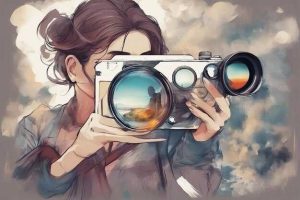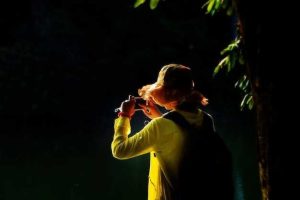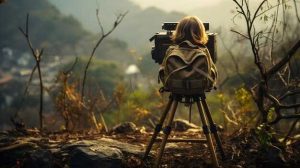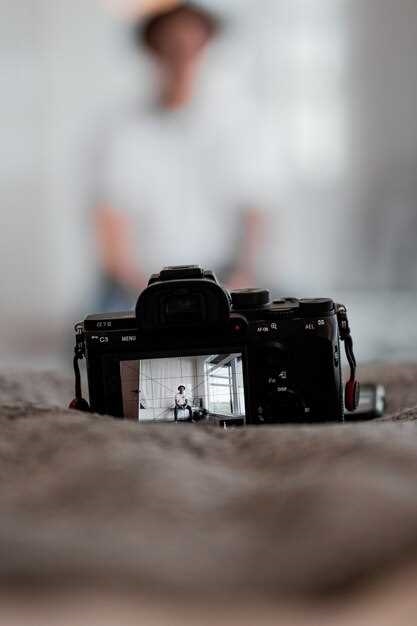
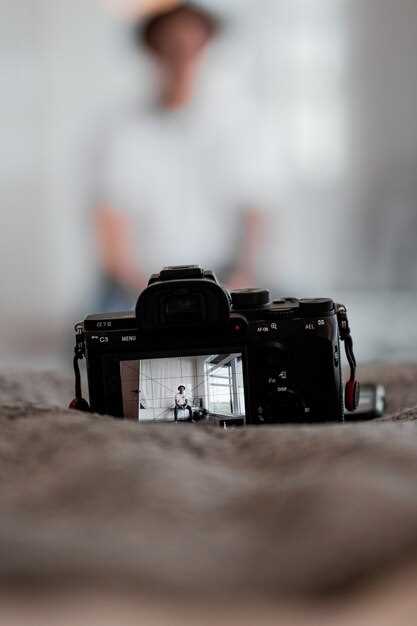
Delving into the realm of photography, where the lens becomes a gateway to a hidden universe, is an exhilarating journey. It is a world where the tiniest of subjects are magnified, revealing a level of detail that often goes unnoticed by the naked eye. This captivating art form, known as macro photography, allows us to explore the intricacies of the miniature world that surrounds us.
Macro photography is a technique that enables photographers to capture the essence of small subjects, showcasing their delicate features and unique characteristics. Through the use of specialized lenses and equipment, photographers can magnify these subjects, bringing them to life in a way that is both awe-inspiring and enlightening. By focusing on the minute details, macro photography allows us to appreciate the beauty that lies within the smallest of things.
With macro photography, the world becomes a canvas of endless possibilities. From the delicate petals of a flower to the intricate patterns on an insect’s wings, every subject holds a story waiting to be told. The artistry lies in the ability to capture these subjects in a way that not only showcases their beauty but also evokes a sense of wonder and curiosity in the viewer.
Through the lens of a macro photographer, even the most ordinary objects can be transformed into extraordinary works of art. A simple leaf becomes a tapestry of veins, each one telling a story of resilience and growth. A droplet of water becomes a mesmerizing world of reflections, distorting reality and inviting us to see things from a different perspective. Macro photography allows us to appreciate the intricacies of the world around us, reminding us that beauty can be found in the smallest of details.
Understanding Macro Photography: Exploring the World Up Close
Delving into the realm of macro photography allows us to embark on a captivating journey of discovery, where we can intimately explore the intricate wonders of the world around us. By focusing on the minute details of small subjects, we are able to uncover a whole new perspective that often goes unnoticed in our everyday lives.
Macro photography grants us the opportunity to magnify the tiniest elements and reveal their hidden beauty. Through the lens, we can capture the delicate textures, patterns, and colors that exist within the miniature world, showcasing the extraordinary intricacy that lies beneath the surface.
With macro photography, we are able to bring attention to the often overlooked aspects of nature, such as the delicate petals of a flower, the intricate patterns on an insect’s wings, or the subtle details of a dewdrop on a leaf. By immersing ourselves in this close-up exploration, we gain a deeper appreciation for the complexity and diversity that exists within the smallest of subjects.
Understanding the techniques and equipment required for successful macro photography is essential in order to fully capture the essence of these small wonders. From choosing the right lens and camera settings to mastering the art of focusing and lighting, each element plays a crucial role in achieving stunning macro images.
Furthermore, exploring the world up close through macro photography not only allows us to capture visually striking images but also encourages us to develop a heightened sense of observation and appreciation for the intricate details that surround us. It invites us to slow down, to take a closer look, and to marvel at the extraordinary beauty that exists within the seemingly ordinary.
So, let us embark on this fascinating journey of understanding macro photography and explore the world up close, where the smallest subjects hold the greatest secrets and where the intricate details come to life through the lens of our cameras.
Essential Equipment for Macro Photography: Tools for Capturing the Details
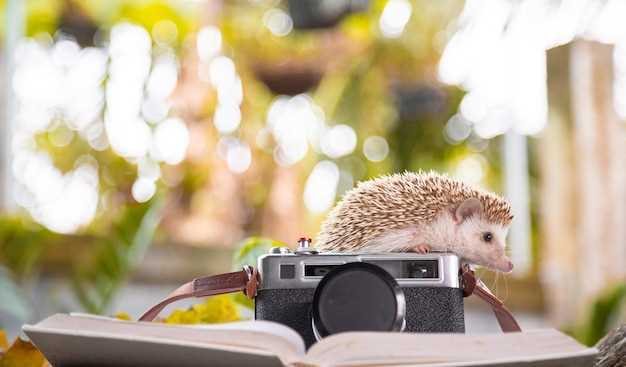
When it comes to capturing the intricate beauty of small subjects, having the right equipment is essential. In this section, we will explore the tools that are crucial for achieving stunning macro photographs. From lenses to lighting, each piece of equipment plays a vital role in capturing the details that make these subjects truly mesmerizing.
One of the most important tools for macro photography is a specialized lens. These lenses are designed to provide high magnification and exceptional clarity, allowing you to capture even the tiniest details with precision. With a macro lens, you can bring the world of small subjects to life, revealing the intricate textures and patterns that are often overlooked by the naked eye.
In addition to a macro lens, a sturdy tripod is another essential piece of equipment. When shooting at such close distances, even the slightest movement can result in blurry images. A tripod provides stability and eliminates camera shake, ensuring that your photos are sharp and focused. Look for a tripod that is lightweight and easy to adjust, allowing you to position your camera at various angles and heights.
Proper lighting is also crucial for macro photography. When working with small subjects, it’s important to have control over the lighting conditions to highlight the details effectively. A ring light or a macro flash can provide even illumination, reducing shadows and enhancing the textures of your subjects. Experimenting with different lighting setups can add depth and dimension to your macro photographs.
Another tool that can greatly enhance your macro photography is a set of extension tubes. These tubes are placed between the camera body and the lens, increasing the magnification capabilities. By using extension tubes, you can achieve even greater levels of detail and capture subjects in a larger-than-life manner. They are a cost-effective alternative to purchasing additional macro lenses.
Lastly, investing in a remote shutter release can significantly improve your macro photography. When shooting at high magnifications, even the slightest touch of the camera can cause vibrations and result in blurry images. A remote shutter release allows you to trigger the camera without physically touching it, ensuring that your photos are sharp and free from any unwanted movement.
In conclusion, having the right equipment is essential for capturing the intricate details of small subjects in macro photography. From specialized lenses to tripods, lighting tools, extension tubes, and remote shutter releases, each piece plays a crucial role in achieving stunning macro photographs. By utilizing these tools effectively, you can bring the hidden beauty of small subjects to life and create captivating images that showcase their intricate details.
Lighting Techniques for Macro Photography: Illuminating the Tiny Details
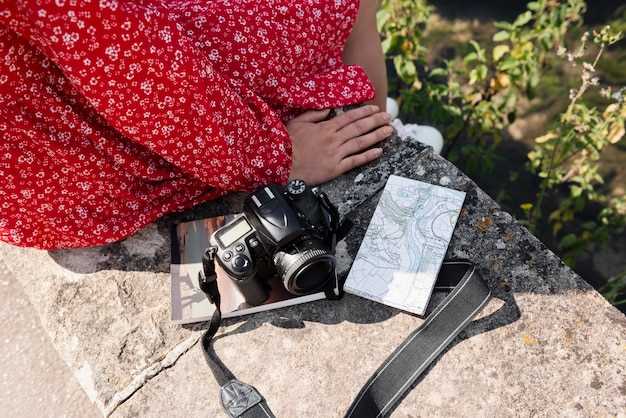
In the realm of macro photography, capturing the intricate beauty of small subjects requires careful attention to lighting techniques. The way you illuminate your subjects can greatly impact the final result, enhancing the details and bringing out their unique characteristics. In this section, we will explore various lighting techniques that can help you achieve stunning macro photographs.
1. Natural Light
One of the most accessible and versatile lighting sources for macro photography is natural light. Utilizing the sun’s rays can create a soft and diffused illumination, perfect for highlighting the delicate features of small subjects. Experiment with different times of the day and angles to find the best lighting conditions for your specific subject.
2. Artificial Light
When natural light is not sufficient or available, artificial light sources can come to the rescue. Using external flashes or continuous lights allows you to have more control over the direction and intensity of the light. Consider using diffusers or reflectors to soften harsh shadows and create a more balanced lighting setup.
| Lighting Technique | Description |
|---|---|
| Backlighting | Placing the light source behind the subject to create a halo effect and emphasize its outline. |
| Side Lighting | Positioning the light source at an angle to the subject to create depth and bring out textures. |
| Diffused Lighting | Using a diffuser to soften the light and reduce harsh shadows, resulting in a more even illumination. |
| Fill Lighting | Adding a secondary light source to fill in shadows and provide more balanced lighting. |
Remember, the key to successful macro photography lighting is experimentation and understanding how different lighting techniques can enhance your subjects. By mastering the art of illuminating small details, you can capture breathtaking images that showcase the beauty of the miniature world.
Composition Tips for Macro Photography: Creating Stunning Close-up Images
When it comes to capturing the intricate beauty of small subjects, the way you compose your macro photographs plays a crucial role in creating stunning close-up images. The composition of your shot can enhance the visual impact, draw attention to specific details, and create a sense of balance and harmony.
Here are some composition tips to help you elevate your macro photography:
- Find a Focal Point: Identify the main subject or detail that you want to highlight in your macro photograph. This focal point will serve as the center of attention and guide the viewer’s eye.
- Rule of Thirds: Apply the rule of thirds to create a visually pleasing composition. Imagine dividing your frame into a 3×3 grid and place your focal point along the intersecting lines or at the points where the lines meet.
- Leading Lines: Utilize leading lines to guide the viewer’s gaze towards your subject. These lines can be natural elements like branches, petals, or even the curves and patterns within your subject itself.
- Foreground and Background: Pay attention to the elements in the foreground and background of your shot. Use them to add depth and context to your image, creating a sense of scale and dimension.
- Negative Space: Don’t be afraid to incorporate negative space in your composition. This empty space can help emphasize your subject and create a sense of simplicity and elegance.
- Angles and Perspectives: Experiment with different angles and perspectives to add visual interest to your macro photographs. Get down low, shoot from above, or try unique angles to capture your subject from a fresh and intriguing viewpoint.
- Color and Contrast: Consider the colors and contrast within your frame. Look for complementary or contrasting colors that can enhance the visual impact of your subject and make it stand out.
- Symmetry and Patterns: Look for symmetrical subjects or patterns in nature to create visually striking compositions. Symmetry can bring a sense of balance and harmony to your macro photographs.
- Experiment and Break the Rules: While these composition tips can guide you, don’t be afraid to break the rules and experiment. Macro photography offers endless possibilities, so let your creativity flow and capture unique and captivating images.
By applying these composition tips, you can take your macro photography to the next level and create stunning close-up images that showcase the intricate details of small subjects in a visually captivating way.
Overcoming Challenges in Macro Photography: Dealing with Depth of Field and Motion
Exploring the intricacies of capturing small subjects through the lens of a camera can be a fascinating endeavor. However, macro photography presents its own set of challenges that photographers must overcome to achieve stunning results. In this section, we will delve into two key challenges faced in macro photography: depth of field and motion.
Depth of Field: One of the primary challenges in macro photography is managing depth of field. When shooting up close, the depth of field becomes extremely shallow, resulting in a narrow plane of focus. This means that only a small portion of the subject will be in sharp focus, while the rest may appear blurred or out of focus. To overcome this challenge, photographers can employ various techniques such as adjusting the aperture, using focus stacking, or utilizing specialized macro lenses with a larger depth of field.
Motion: Another challenge in macro photography is dealing with the inherent motion of both the subject and the photographer. Small subjects, such as insects or flowers, can be quite active, making it difficult to capture them in sharp focus. Additionally, even the slightest movement of the camera can result in blurry images. To overcome this challenge, photographers can use techniques like using a tripod or a monopod to stabilize the camera, employing a fast shutter speed to freeze motion, or utilizing external lighting to minimize the need for longer exposure times.
In conclusion, macro photography offers a unique perspective on the intricate details of small subjects. However, it comes with its own set of challenges, particularly in managing depth of field and motion. By understanding and employing various techniques, photographers can overcome these challenges and capture stunning macro images that showcase the beauty and intricacy of the small world around us.
Post-processing for Macro Photography: Enhancing the Fine Details in Your Images
When it comes to perfecting your macro photographs, capturing the intricate elements of small subjects is just the beginning. To truly bring out the beauty and intricacy of your images, post-processing techniques play a crucial role. In this section, we will explore various methods to enhance the fine details in your macro photographs, allowing you to create stunning and captivating visuals.
Refining Sharpness and Clarity: One of the key aspects of post-processing for macro photography is refining the sharpness and clarity of your images. By using tools like sharpening filters and clarity adjustments, you can bring out the tiny details that may have been missed during the initial capture. These techniques help to enhance the textures and patterns, making your subjects appear more lifelike and engaging.
Adjusting Contrast and Tone: Another important aspect of post-processing is adjusting the contrast and tone of your macro images. By carefully manipulating the brightness, shadows, highlights, and overall contrast, you can create a more dynamic and visually appealing composition. This allows the intricate details to stand out and adds depth to your photographs, making them more captivating to the viewer.
Removing Distractions: In macro photography, even the tiniest distractions can take away from the main subject. During post-processing, you have the opportunity to remove any unwanted elements that may be present in your images. By using tools like spot healing or cloning, you can seamlessly eliminate distractions and create a cleaner and more focused composition, allowing the intricate details to take center stage.
Enhancing Colors and Saturation: Colors play a vital role in macro photography, as they can evoke emotions and enhance the overall impact of your images. During post-processing, you can selectively enhance the colors and saturation of specific elements in your photographs. By using tools like selective color adjustments or targeted saturation adjustments, you can make the intricate details pop and create a visually striking image.
Applying Creative Effects: Post-processing also offers the opportunity to apply creative effects to your macro photographs. Techniques like adding vignettes, applying selective blurring, or experimenting with different color tones can help to further emphasize the intricate details and create a unique visual style. These creative effects allow you to add your personal touch to the images, making them truly stand out.
In conclusion, post-processing for macro photography is an essential step in bringing out the fine details of your small subjects. By refining sharpness, adjusting contrast, removing distractions, enhancing colors, and applying creative effects, you can elevate your macro images to a whole new level. Experiment with different techniques and find your own style to create visually stunning and captivating macro photographs.


